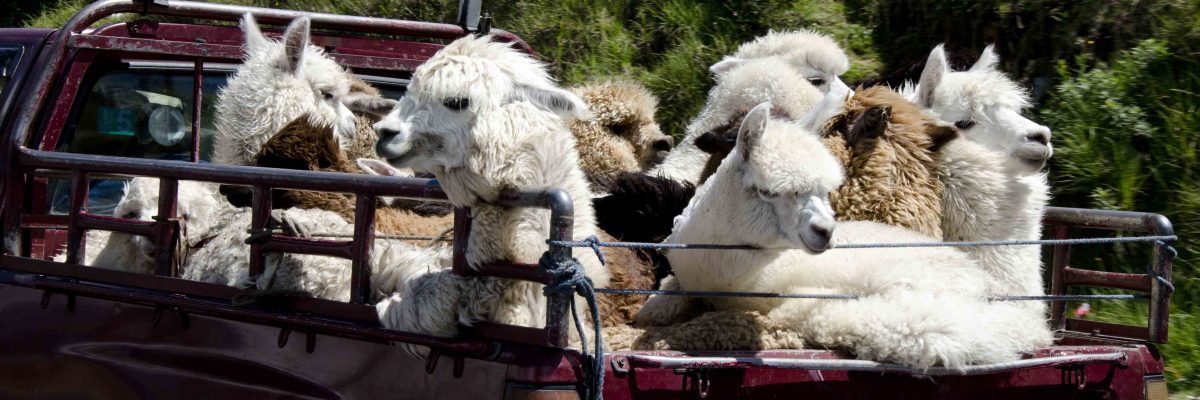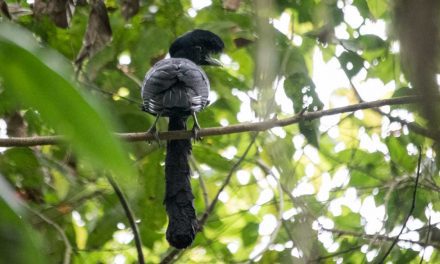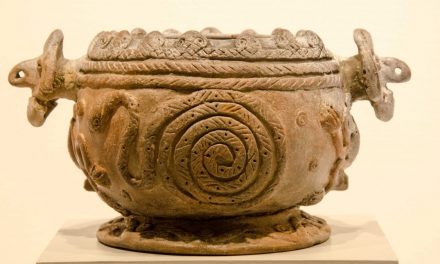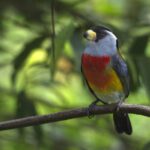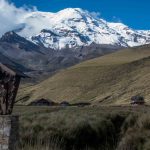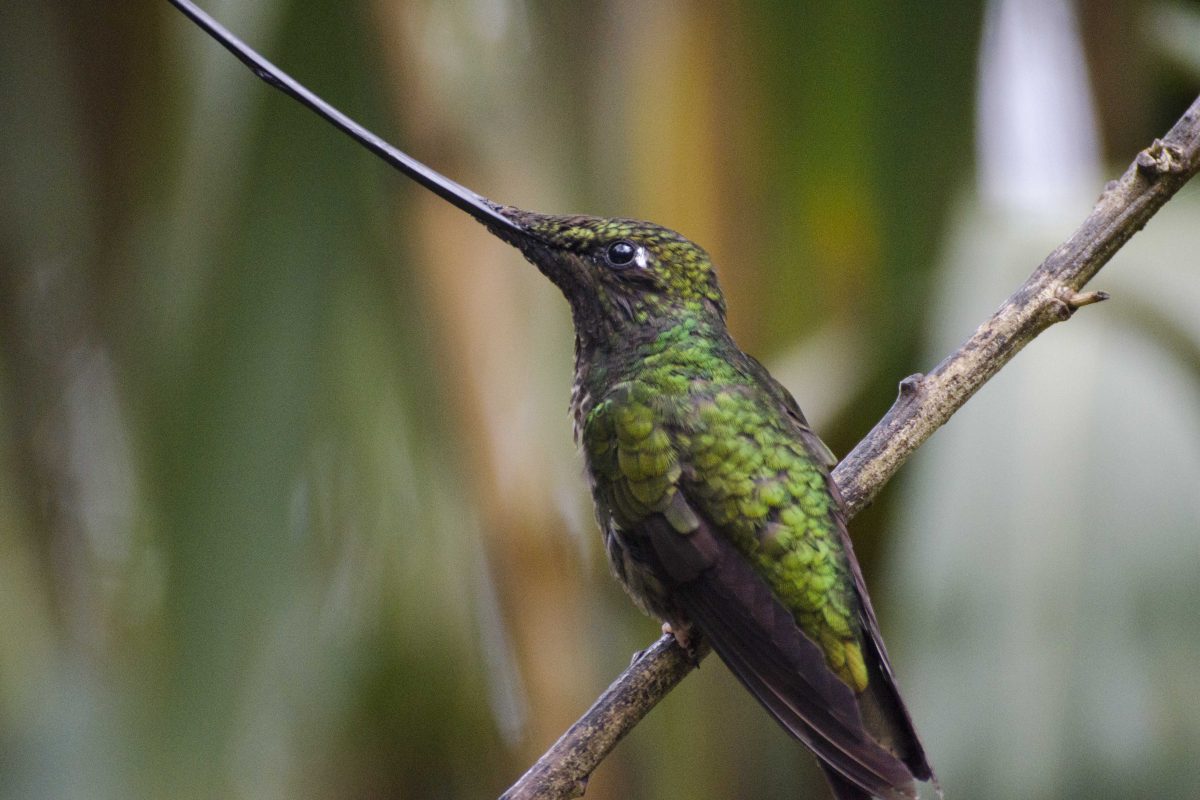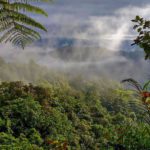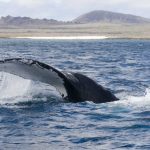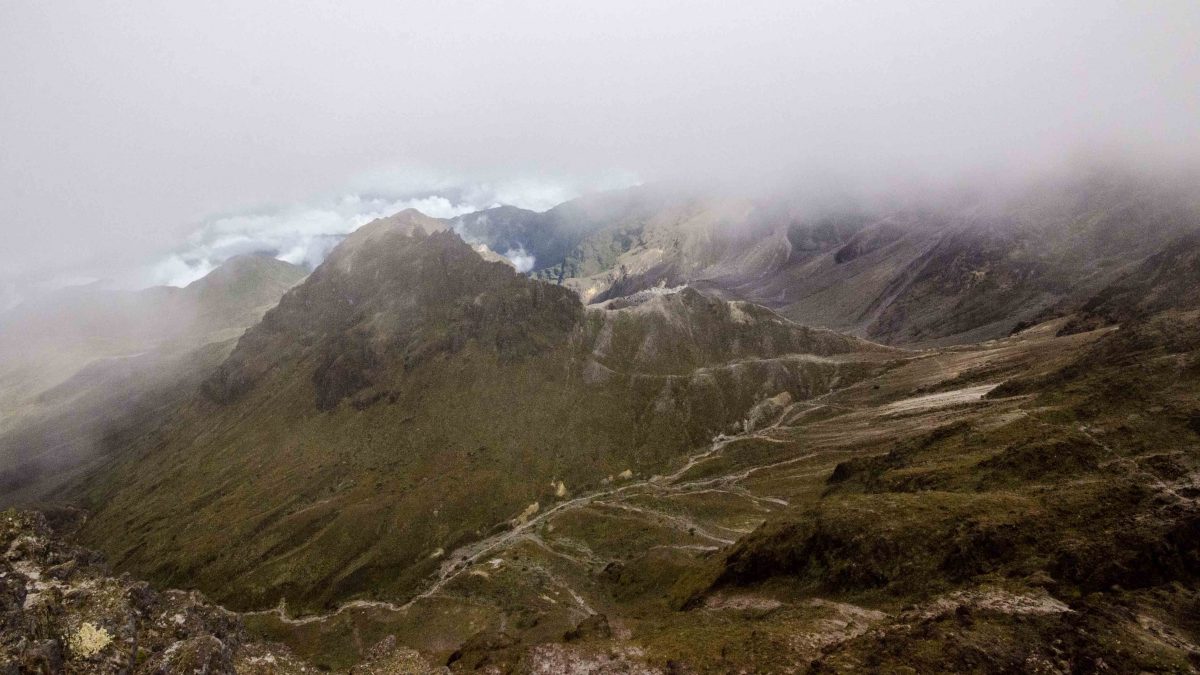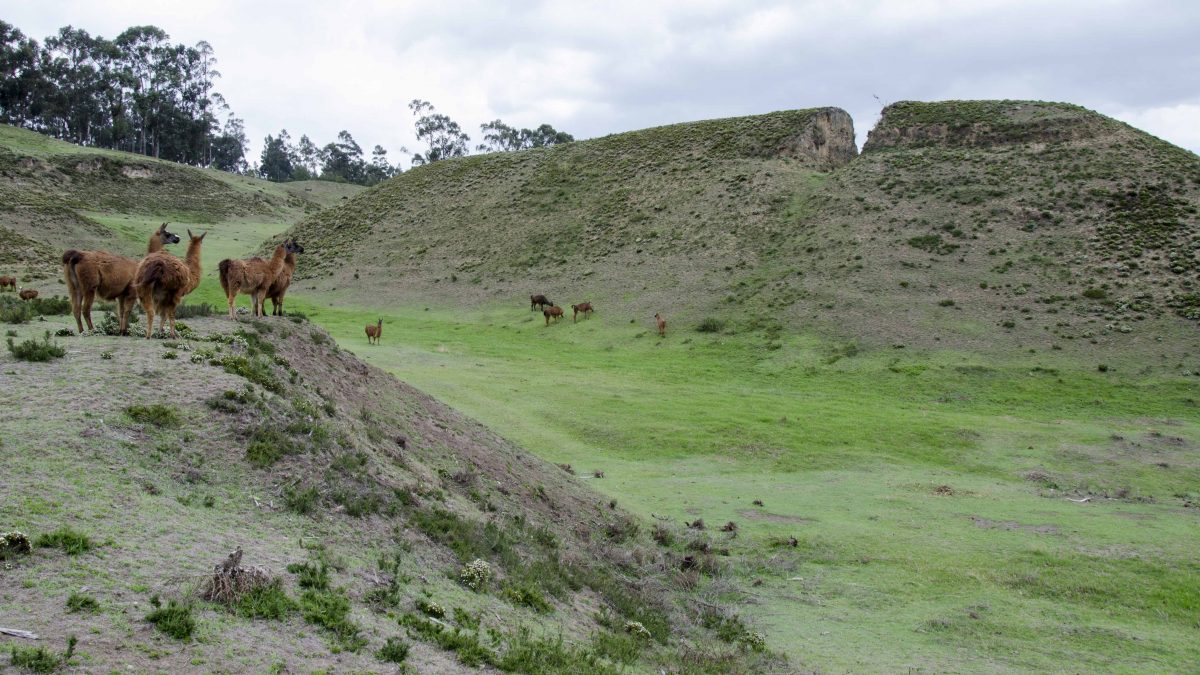On a hot afternoon deep inside the Cuyabeno Wildlife Reserve, I find myself cradling a small turtle in my cupped hands, the weight of its tiny body a reminder that the smallest things in life are often the most important. With tears in my eyes, I speak gently into its ear, “I know that life isn’t easy. Do your best. Be resilient. Be a survivor.”

In that moment, a powerful connection forms, not only with the small turtle but with the entire Cofán community and the incredible work of Randy Borman and his family. I release the turtle, watching it waddle across the sand, running as fast as its tiny legs can take it into the cool brown waters of the fast-moving Rio Aguarico.
The Cofán Turtle Rescue and Reproduction Center
Since 1998, Randy Borman and the Cofán community have worked tirelessly to protect turtle populations in the Upper Cuyabeno region of Ecuador. Their efforts have not only made a positive impact on native turtle populations but reveal how the Cofán have taken the lead to solve a problem in a nationally operated nature reserve shared by 5 indigenous nations.
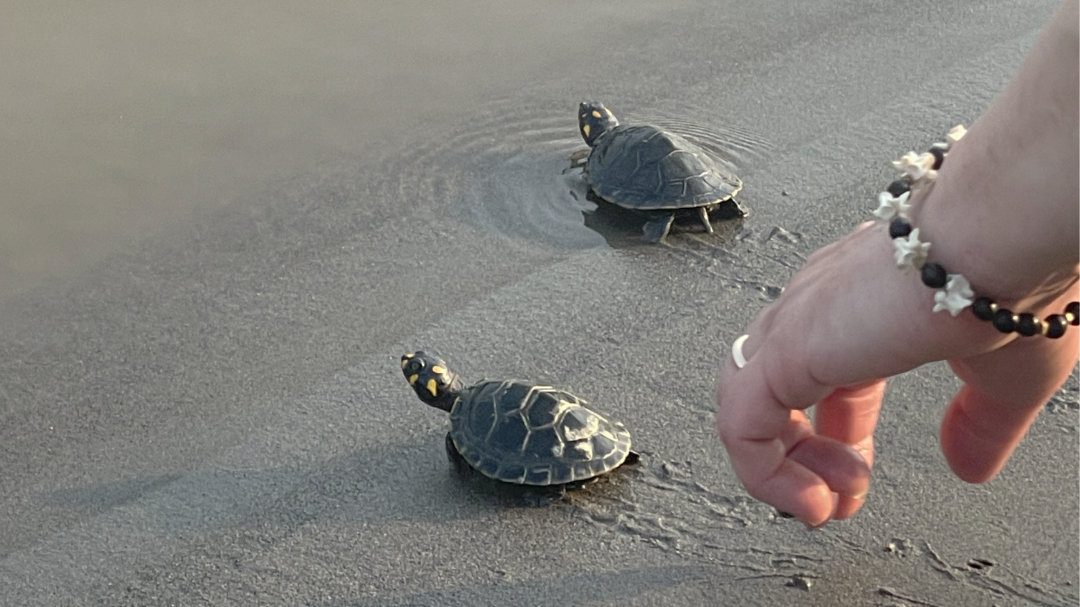
An Appreciable Goal: Nurturing Life
The project’s immediate goal is to continue nurturing life by populating the area with turtles.
Of course, you are probably wondering why the turtles are in danger in the first place.
When this project first began a couple of decades ago, the Cofán had noticed how difficult it was to find turtle eggs on their beaches. They were searching for nests because turtle eggs are an important traditional food for all indigenous river peoples.
The arrival of oil workers in the Ecuadorian Amazon increased consumption of turtles and their eggs. Rarely was a nest left uneaten or a large turtle passed by without considering its use in the soup pot. And while the area could sustain some hunting and gathering, it could not sustain the consistent plunder of new people entering the region.

The Cofán decided to do something about this. They started the Cofán Turtle Rescue and Reproduction Center to save local turtle populations. They knew if they did not do something, Amazon turtles would become a rare species along the Rio Aguarico and its tributaries.
Initially, they convinced their own community to stop eating turtle flesh and to limit the number of eggs they harvested. In the early days of the project, a family might eat 100% of the eggs found. Today, they eat anywhere from 40-60%, depending on how many nests are found. And nowadays, Cofán children are turned off by the idea of eating turtle flesh. Most have never tasted it.

The Process of Protecting turtles
Children are a large part of the project, helping their families find and mark the nest on the shore. This job is uniquely suited to Cofán families as it is a task that they have taken part in for millennia.
After finding a nest, the family must chose to leave it alone, harvest it for a meal, or mark it for future collection for the project. The eggs in the latter category are carefully transported to the Rescue and Reproduction Center where each egg is laid in the sand pit in the reverse order in which it was removed from the original nest.

Upon hatching, the baby turtles are placed in huge holding pools until they are old enough to be released, usually coinciding with the rainy season when they are about a year old. However, when there are not enough funds to pay for the center to operate for a full year, the baby turtles are released sooner. While this decreases their chance of survival in the wild, families cannot afford to feed and care for turtles without funds.
Families are paid a bonus for every successful turtle that is released into the wild. They collect from 2,500-3,000 nests each year, each of which has 20-40 eggs. That means a potential 50,000 to 120,000 baby turtles could be hatched each year. Of course, there are always eggs that don’t hatch and there are always baby turtles that don’t survive the pools. Fortunately, thousands upon thousands of baby turtles are released each year.
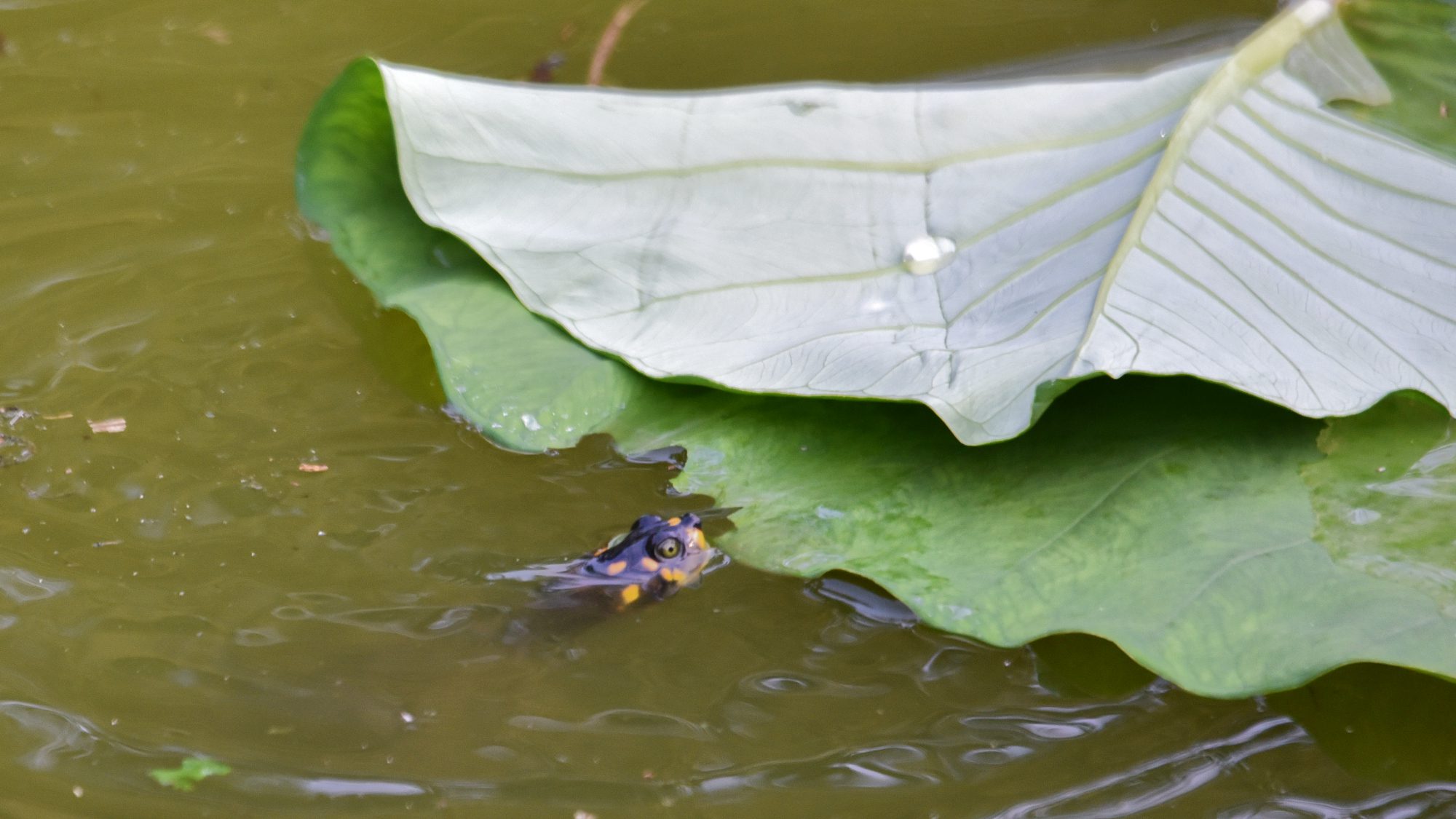
Releasing the Amazon Turtles into the Wild
If you are fortunate to be a guest of the Zabalo Cofán Community, you may be offered the opportunity to release baby Amazon turtles into the wild. As you can already tell, I’m a graduate of this program and highly recommend taking part!
It begins with a big bucket of baby turtles. If you would like to learn more about how that bucket is filled, check out this video that the Cofán community made for an elementary school classroom in the United States:
In the video, you might have noticed that there are two different kinds of turtles that Felipe Borman mentions by their Cofán names in the A’ingae language.
First, the Charapa (Podocnemis unifilis). This is the most common species found in the Cuyabeno Wildlife Reserve. It is actually fairly well-known in the United States because it is a common household pet.
Charapas are side-necked turtles. They do not pull their heads straight into their shells. Rather, they bend their neck sideways, tucking under the rim of their shells for protection.
Second, the Poca (Pococnemis expansa) This species of Amazon turtle is much larger and is sometimes known in other regions as the Arrau turtle. Although this species is not officially recognized as endangered, over ten years ago, the Tortoise and Freshwater Turtle Specialist Group recommended that it be considered critically endangered due to habitat loss and overhunting.

When the bucket of turtles arrives, its time for the release! Ours happened to take place along the widest river, the Rio Aguarico. This fast flowing river flows into the Napo River which in turn heads east, emptying into the might Amazon River just north of Iquitos, Peru.
Then you select your turtle from the bucket (is it a Poca or a Charapa?) and head to the water’s edge. Some of let our turtles go straight into the water. Others wanted their turtles to waddle across the sand, like I did. We thought as they entered the water, we would be able to follow their route. But, no. They quickly disappeared beneath the surface and rapidly headed downstream. Probably not going all the way to Peru… yet, maybe.
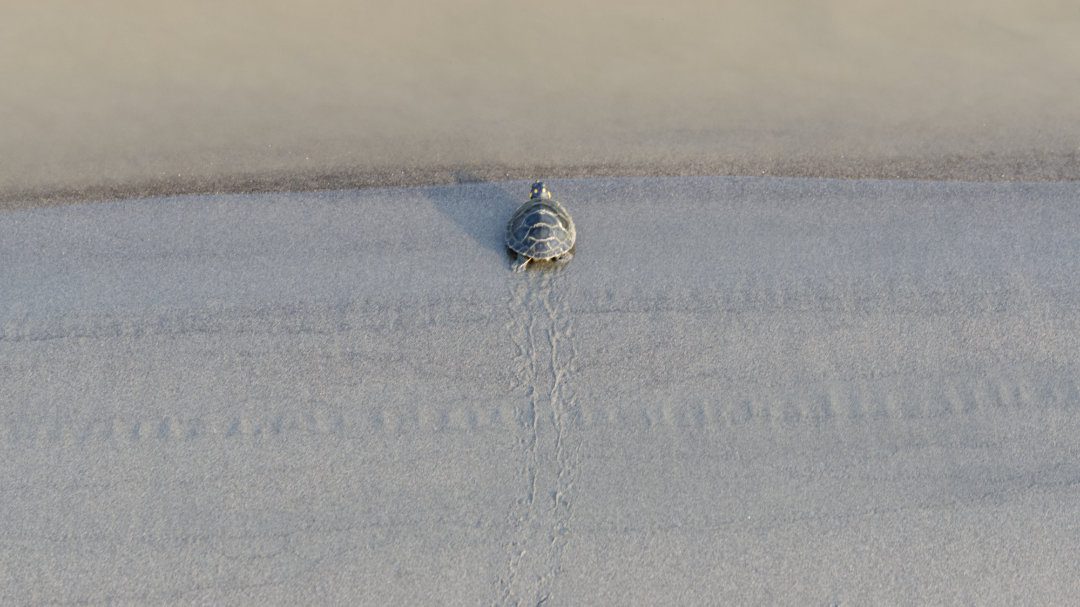
Amazon Turtles Are An Umbrella Species
More likely, our baby turtles would be eaten before they could manage to mate. I know this is the sad side of nature but this is also why it is so important to save Amazon turtles. They are an umbrella species. They protect other species by their very existence. Without them, the vibrant food web begins to fall apart. Animals like iguanas, catfish, and some birds eat turtles.
And the reverse is true. Turtles are the animal vacuum cleaners of Amazon rivers. They eat algae and other plants that can choke black water rivers and pocket lakes that make the Cuyabeno Wildlife Reserve the incredible landscape that it is. Without turtles, the Cuyabeno Wildlife Reserve would be in dire straights.
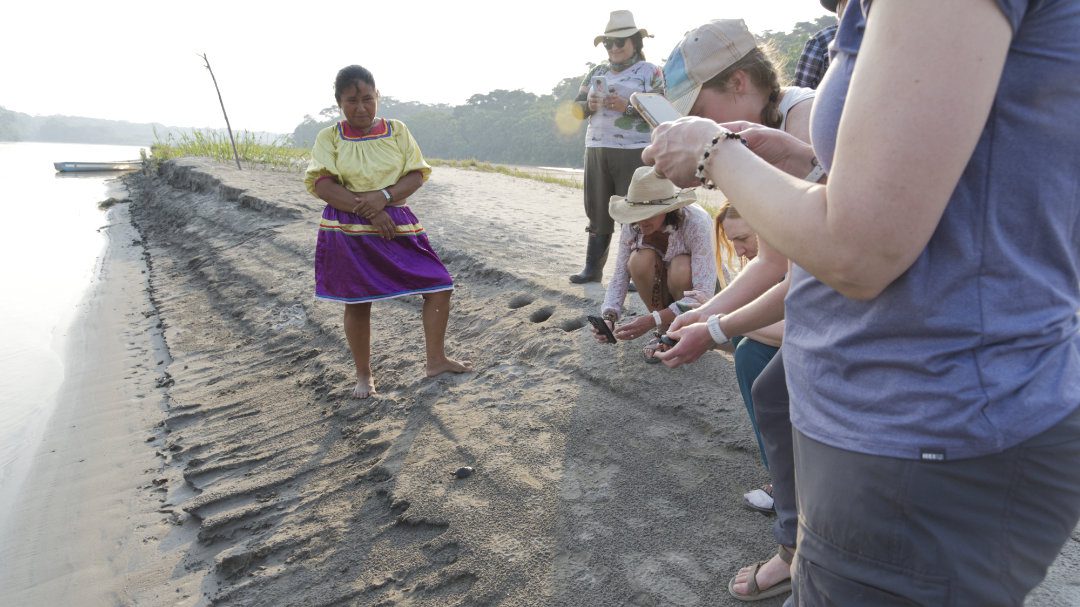
Long-Term Goals: A Sustainable Future
It is unlikely that Amazon turtles will face a rosy future anytime soon. Therefore, the Cofán plan on continuing their project for the long term.
Although they have worked with researchers and non-profit organizations in the past, it has been difficult to garner long term support from these organizations, even those with a conservation focus.
Instead, the Cofán are searching for ways to obtain long-term funding without relying on other organizations. This year, the Zabalo community members who work at the Cofán Turtle Rescue and Reproduction Center granted permission to a group of former visitors, including myself, to host a GoFundMe campaign. It is an experiment to see if crowdfunding might provide a potential solution for the future.

Conclusion: A Journey of Hope and Resilience
Remembering back to the moment when I watched that tiny turtle disappear into the Rio Aguarico, I am filled with hope. The Zabalo Cofáns’ unwavering commitment to conservation is inspirational. They saw a need in their own community and they worked together to solve the problem.
This initiative is not just about saving endangered turtles; it’s about nurturing resilience and inspiring a community to protect the precious biodiversity that surrounds them.
Will you join me and become a voice for these endangered turtles? Let’s support the Cofán in this incredible work. Every day, they remind us that in the face of challenges, we must do our best, be resilient, and above all, be survivors.



